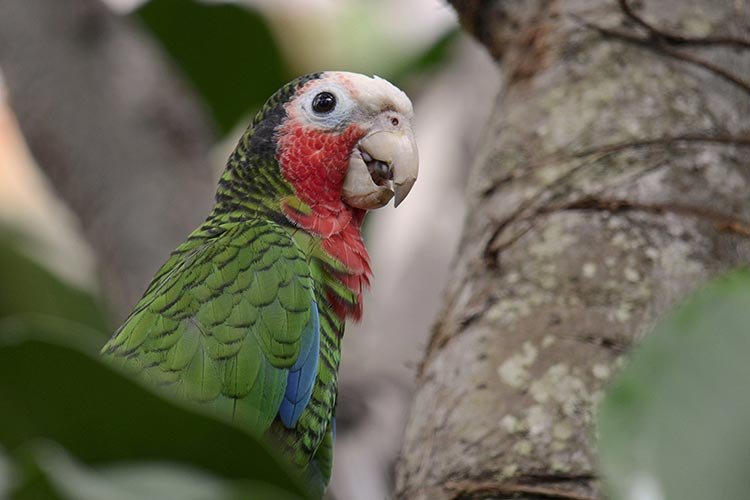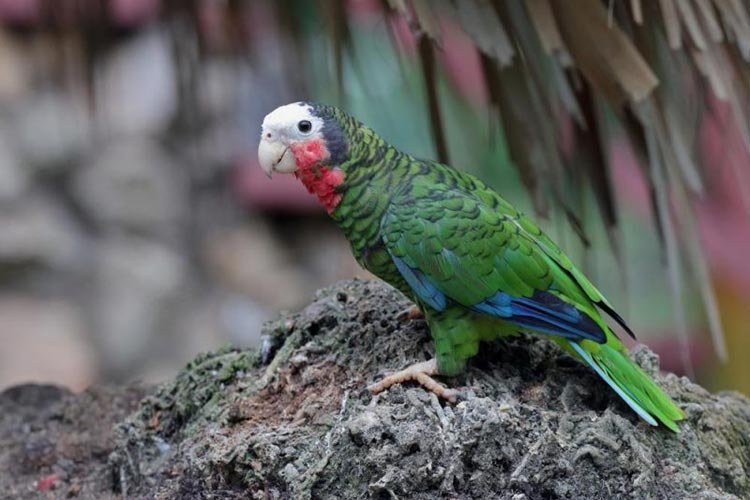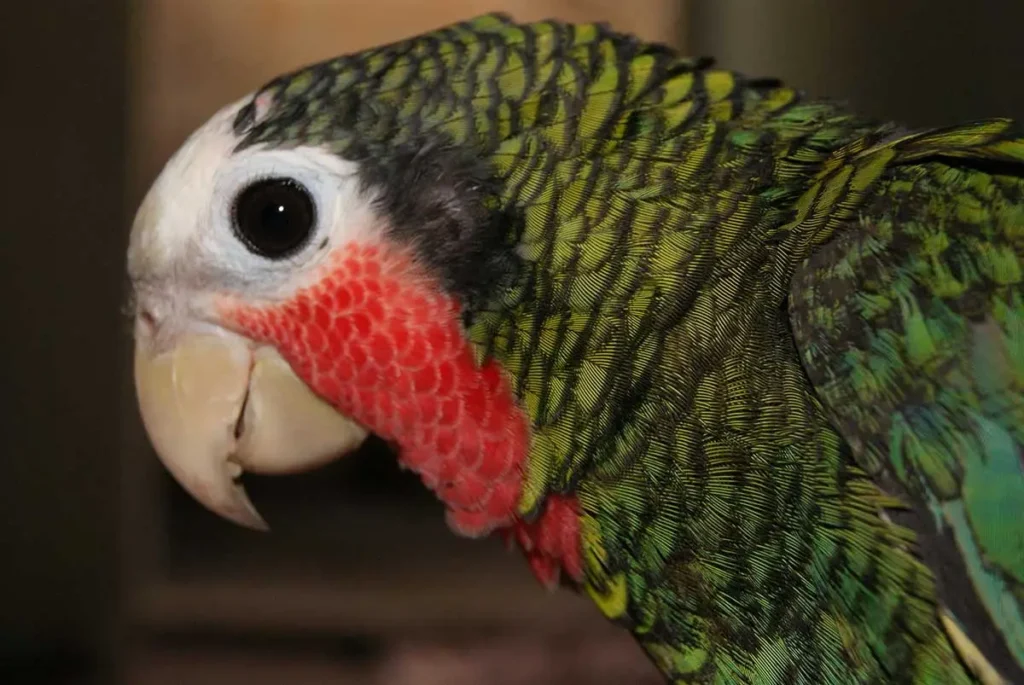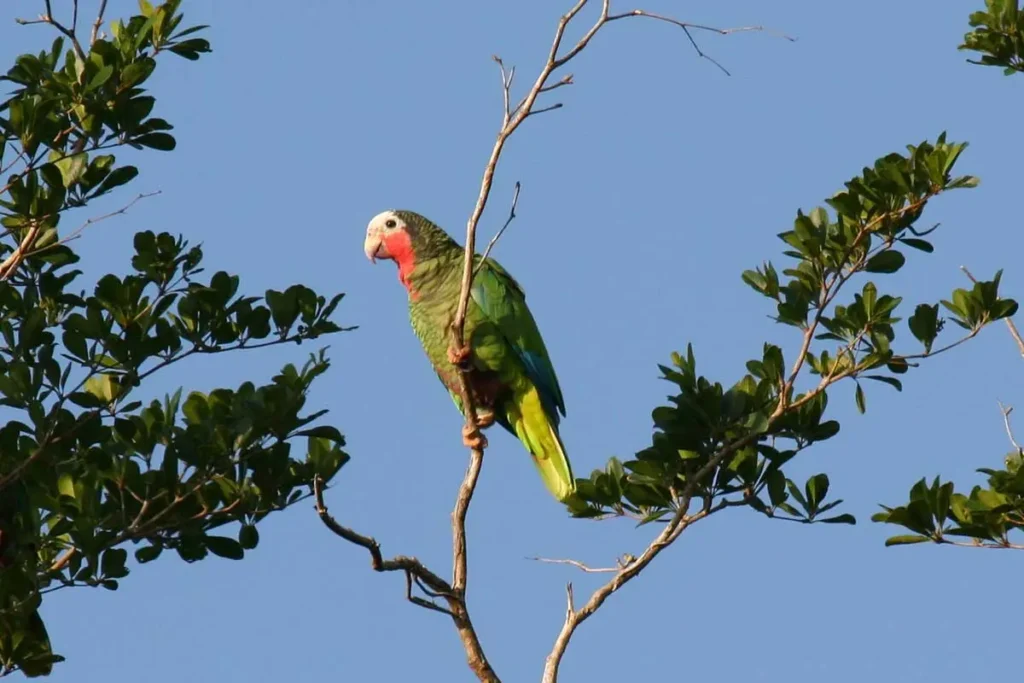
The Cuban Amazon Parrot (Amazona leucocephala), also known as the Cuban Parrot or Cuban Amazon or Cayman Island amazon (Cotorra de Cuba in Spanish), is a fascinating species of parrot native to the Caribbean Islands. In this comprehensive guide, we’ll delve into the world of these unique wild birds, exploring their origins, natural habitat, physical characteristics, behavior, and the challenges they face in the wild.
Origins and Natural Habitat
The Cuban Parrot can be found in various habitats throughout the Caribbean, including the Isle of Pines (Isla de la Juventud), Cuba, and the Cayman Islands. These birds prefer a range of environments, from palm groves and pine forests to agricultural land and broadleaved woodland.
Physical Characteristics
The Cuban Parrot is a medium-sized parrot, measuring around 12-13 inches in length. Its feathers are primarily green, with some blue on the outer flight feathers, red on the forehead, and a touch of pale yellow on the cheeks. The bird has a distinctive white head, which gives it the alternative name White-headed Amazon Parrot.
Cuban amazon subspecies
There are four recognized subspecies of the Cuban Parrot, each with slight differences in appearance and distribution:
- Amazona leucocephala leucocephala (Cuba and the Isle of Pines)
- Amazona leucocephala caymanensis (Grand Cayman)
- Amazona leucocephala hesterna (Cayman Brac and Little Cayman)
- Amazona leucocephala bahamensis (Bahamas)
Distribution of Cuban Amazon Parrots
The range of the Cuban Parrot is divided into several distinct populations:
- Eastern and Western Cuba: The main population of Cuban Amazons is found throughout Cuba, with distinct populations in the eastern and western parts of the island. Eastern Cuba is home to the nominate subspecies, Amazona leucocephala leucocephala, while the western region hosts a smaller population with little or no red on their forehead.
- Cayman Islands: The Cayman Islands are home to two subspecies of Cuban Amazon Parrots: A. l. caymanensis on Grand Cayman and A. l. hesterna on Cayman Brac and Little Cayman. These parrots are locally known as Cayman Parrots.
- Bahamas and Abaco Islands: The Bahama Parrot, or Amazona leucocephala bahamensis, is found on Great Inagua and Abaco Islands. This subspecies is unique for its rose throated parrot features.

Behavior and Ecology
Social Behavior
Cuban Amazon Parrots are known for their social nature and strong bonds with their mates. They form monogamous pairs during the mating season and often stay together for life. When not breeding, they gather in flocks and can be observed engaging in playful and sometimes aggressive behavior.
Breeding Season
The breeding season for Cuban Amazons usually begins in March and lasts until June or July. During this time, they nest in tree cavities, nest boxes, or palm trees, often reusing the same nesting sites year after year. Nesting trees are typically found in pine forests, providing an ideal environment for raising their own chicks.
The female lays 3-4 eggs, which are about the same size, and incubates them for about 26-28 days, while the male brings her food. After hatching, both parents care for their chicks, feeding them a diet of regurgitated food until they fledge at around 8-10 weeks of age.
Diet and Feeding Habits
Cuban Amazons have a diverse diet, consisting of fruits, seeds, nuts, flowers, and leaves. They also consume cultivated fruit, like green peas and fresh corn, as well as wild fruits, such as cactus fruits. In some areas, they have been known to raid agricultural land, causing damage to crops.
Vocalizations and Sounds
Like most parrots, Cuban Amazon Parrots are known for their loud shrieks and a wide range of vocalizations. They are also skilled mimics, often imitating the sounds of other parrot species and even human speech when kept as pets.

Cuban Parrot as a Pet
Cuban Amazons can make excellent pets due to their sociable nature, intelligence, and ability to mimic speech. However, they can also exhibit aggressive behavior, especially during the breeding season, and require a significant amount of time and attention from their owners.
Caring for a Cuban Parrot
To keep a Cuban Parrot healthy and happy, it’s essential to provide a balanced diet of fresh fruits, vegetables, and high-quality pellets, as well as clean water. A spacious cage and plenty of toys and enrichment activities are also necessary to keep the bird mentally and physically stimulated.
Tips for Pet Parrot Owners
Pet Parrot owners should be aware of the unique challenges associated with owning a Cuban Parrot, such as the need for social interaction and mental stimulation, as well as potential aggressive behaviour. Regular interaction with your parrot, including talking, playing, and training, can help to build a strong bond and ensure a happy, well-adjusted pet.
International Trade and Its Impact on Cuban Parrots
International trade has played a significant role in the decline of the Cuban Parrot population. The demand for these beautiful and intelligent birds as pets has led to illegal trapping and smuggling, particularly from areas such as Isla de la Juventud, Grand Cayman Island, and the Great Inagua Islands. The process of capturing and transporting these parrots is fraught with danger, and many pet parrots do not survive the journey. Those that do often end up in pet shops, far from their native habitats.
The Cuban Amazon Parrot is now listed on the endangered species list, making it illegal to trade them internationally without proper permits. However, this has not entirely curbed the illegal trade in these birds. Wild cock birds in breeding condition are especially targeted, further exacerbating the decline in the wild parrot population. Escaped pets and former captive parrots, often unable to survive in their new environments, may breed with the remaining wild populations, threatening the genetic diversity of the species.
Additionally, the destruction of West Indian Mahogany trees, which provide nesting sites for Cuban Amazon Parrots, has further impacted their numbers. It is crucial to continue conservation efforts to protect these birds and their habitats, ensuring the survival of a species that has been a part of the Caribbean’s natural heritage for centuries.
Conservation Efforts
Cuban Amazons face several threats in the wild, including habitat loss due to deforestation and illegal capture for the pet trade. These factors have led to a decline in their population, and as a result, the species is listed as threatened on the International Union for Conservation of Nature (IUCN) Red List. It has sadly become an endangered species.
Organizations like the Parrot Society UK and Bird Conservation International have been working to protect and conserve the Cuban Parrot and its habitat. Efforts include habitat restoration, public awareness campaigns, and support for local conservation initiatives.
Captive Breeding Programs
Captive breeding programs have been established to help preserve the Cuban Parrot, with some success in reintroducing captive-bred birds into the wild. DNA sexing has been employed to ensure that breeding pairs are genetically diverse, and captive bred stock has been used to bolster wild populations.

Conclusion
The Cuban Parrot is a fascinating and charismatic species that has captured the hearts of bird lovers and owners of parrot worldwide. As an increasingly threatened species, it’s crucial for conservation organizations, governments, and individuals to work together to protect and preserve these remarkable birds and their habitats.
By understanding the unique characteristics, behaviors, and challenges faced by the Cuban Parrot, we can better appreciate the importance of protecting this species for future generations. Whether you are a potential parrot owner or simply an admirer of these incredible birds, we hope that this comprehensive guide has provided you with valuable insights into the world of the Cuban Parrot.
